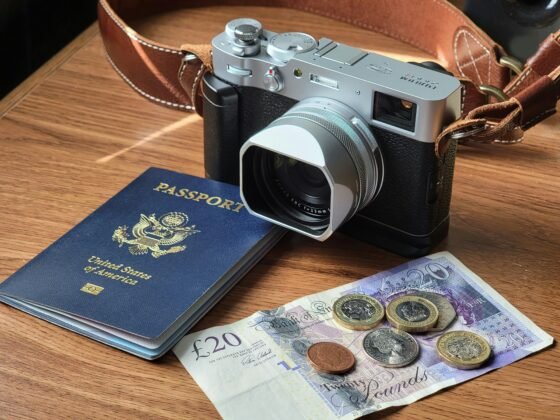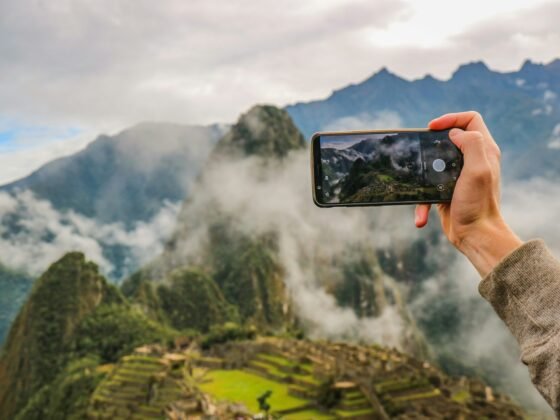
“Digital nomads” are people who arrange their lives in a way that allows them to travel where they wish. Rather than reporting to work in a specific location each day, they work online and arrange their affairs so they can conduct all their business on the internet. Then they can get their work done from a hotel room, the beach, a popular café they want to visit, a campground in the mountains or virtually any other location they wish to explore. One important, non-negotiable requirement for most of them is a working internet connection.
Many digital nomads who are actively engaged in this lifestyle tend to fly to their travel destinations. If you read online discussions posted by the digital nomad crowd, you’ll find they like trading tips on how to make the most of various airlines’ frequent flier programs. However, flying isn’t the only option for transport as a digital nomad. For example, it’s also possible to live in an RV or cruise full time aboard a sailboat.
There are advantages and disadvantages to each of these methods. In any case, whichever method of travel the digital nomad chooses, there are some helpful tools that can greatly facilitate the lifestyle of permanent travel. Let’s take a look at 6 essential tools for long travel you need to know about:
- A Laptop Computer
Most digital nomads rely on their laptops as a means of getting their work done. A digital nomad’s computer must be lightweight and easy enough to carry around, yet have a monitor that’s large enough to work on comfortably. A long battery lifespan is another essential feature to prioritize when choosing your laptop.
- A Smartphone
In addition to a laptop, many digital nomads also consider a smartphone to be an essential tool. This, however, can get complicated, because all smartphones do not work in all locations. You need to pick a smartphone that will work in the destination(s) you plan to travel to. Another option would be to consider maintaining multiple phones – one for each location where you plan to spend time. If you plan to change locations frequently, you might want to consider using pay-as-you-go phones that don’t require a long-term commitment.
- A Backpack
Rugged, durable luggage is essential for any digital nomad traveling via any means. It’s especially important for air-traveling digital nomads, but it’s also critical for RVers and cruising sailors. Cruisers will want to consider picking up a backpack that also doubles as a waterproof marine drybag.
- A Global Hotspot
Unless you have enough money saved that you don’t need to work, you’re going to need to be sure that you have a reliable internet connection available at all times. A global hotspot ensures that you will not have to worry about this.
- A Service Like Azimo for Moving Money
One of the most complex and important aspects of the digital nomad lifestyle is figuring out how to move your money around. If you’ll be earning money in your home country, but you’ll be physically present in a different country, you’ll need to figure out how you’re going to move your money from where you earn it to where you’ll be spending it. There are various options you can consider for this:
Use Azimo or a Similar Money Transfer Service
You could use a money transfer service like Azimo to handle your currency conversion and money transfer. Azimo’s reviews say that it can be used to transfer 60 currencies to over 200 different jurisdictions or countries. Unlike some competing money transfer services, Azimo allows users to complete cash pickups in some countries. In comparison, some other competing services only allow bank-to-bank transfers. There are many other similar services you could consider using; Azimo is one possible choice, but they might or might not be the best service to use considering your own unique situation.
- A Debit Card
If you have a debit card, and all the merchants you buy from accept that particular method of payment, you could simply use your debit card to withdraw cash at ATMs or to pay for merchandise. If you want to do this, you’ll have to take some steps to get everything set up.
First, you’ll want to call your debit card provider and alert them to the fact that you’ll be traveling with your debit card. They need to know this so your transactions won’t be flagged as fraud.
Next, at work, you can set things up so that your payments get auto deposited into the bank account where your debit card draws from.
Finally, be sure to carry your debit card with you. Also be sure to make a note of the issuing bank’s customer service numbers, and keep those separate from the card itself; this precaution can help you deal with any problems that may arise if your card is lost or stolen while you’re traveling.
Be aware that when you use your debit card abroad, you will be at the mercy of whatever fees and exchange rates the parties to your transactions want to impose. This is a convenient way to move money, but it isn’t necessarily going to be the cheapest way. Unless you specifically signed up for a no-fee debit card, you’re likely to have to pay around 3 percent extra for making purchases in a foreign currency. Review your debit card agreement to find the exact rate you’ll be paying and ensure that it is agreeable to you before you use this method of moving money.
You would typically pay a lower rate using Azimo or similar money transfer services, so you’d likely want to be careful to avoid using your debit card to pay for sizable purchases in a foreign country.
So there you have it: Those are some of the most important tools you’ll need for living the digital nomad lifestyle. Whether you want to travel internationally or simply cruise around exploring your home country, these tools can help to make life easier for you as you travel.











